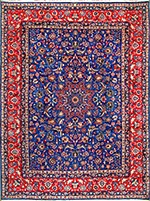Textiles Studies
Date of this Version
2016
Document Type
Article
Citation
Newsletter of the Textile Society of America, 2016, p. 18f
Abstract
Designing Identity: The Power of Textiles in Late Antiquity. Edited by Thelma K. Thomas, with contributions by Jennifer L. Ball, Edward Bleiberg, Kathrin Colburn, Helen C. Evans, Christine Kondoleon, Brandie Ratliff, Thelma K. Thomas, Elizabeth D. Williams. Princeton and Oxford: Princeton University Press and Institute for the Study of the Ancient World at New York University, 2016. 152 p. ISBN: 978-0691169422
This beautifully illustrated book, edited by textile historian Thelma K. Thomas, Associate Professor at NYU’s Institute of Fine Arts, advances scholarship on textiles of Late Antiquity with interpretive essays by curators, conservators, and historians. As a scholarly contribution offering a critical reappraisal of clothing and furnishings of the Late Antique world, it complements an exhibition of the same title, curated by Thomas (on view through 22 May 2016 at the Institute for the Study of the Ancient World at NYU, 15 East 84th Street, NY, NY).
Spanning the 3rd century to several centuries after the Arab conquests, the hangings, rugs, curtains, tunics, and mantles presented and discussed are presumably made in Egypt, where they were found in burial contexts or rubbish heaps, all secondary contexts when considered in terms of origin and intended use (with the exception, perhaps, of burial shrouds). Taken together these textiles comprise a diverse group, representing various weave structures and textile technologies (spinning, dyeing, weaving, embroidery, tailoring, finishing techniques). Most of the figural representations are executed in tapestry – weft-faced plain weave with discontinuous dyed wool wefts interlacing with undyed linen warps. The use of eccentric wefts allows for extraordinary painterly effects, and the polychromy represents exceptionally sophisticated understanding of dye materials and technologies. In textiles with large roundels of dyed wool wefts on undyed linen warps, unclear whether from furnishings or clothing, the use of a purple dye is sometimes the famous and rare Tyrian extraction from the gland of the murex.
Included in
Art and Materials Conservation Commons, Art Practice Commons, Fiber, Textile, and Weaving Arts Commons, Indigenous Studies Commons, Museum Studies Commons

